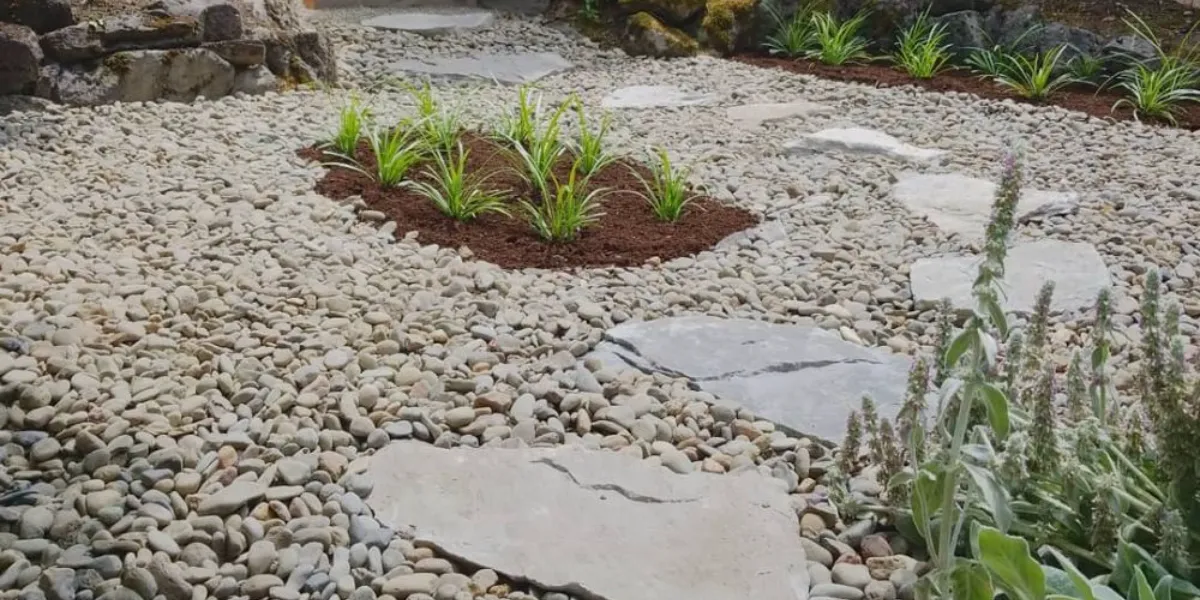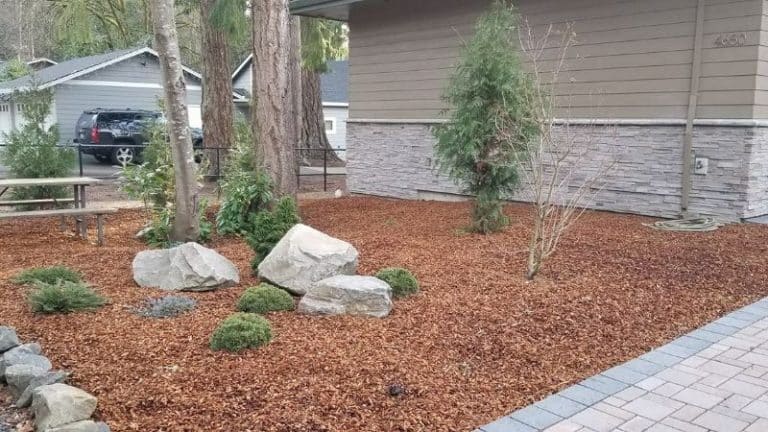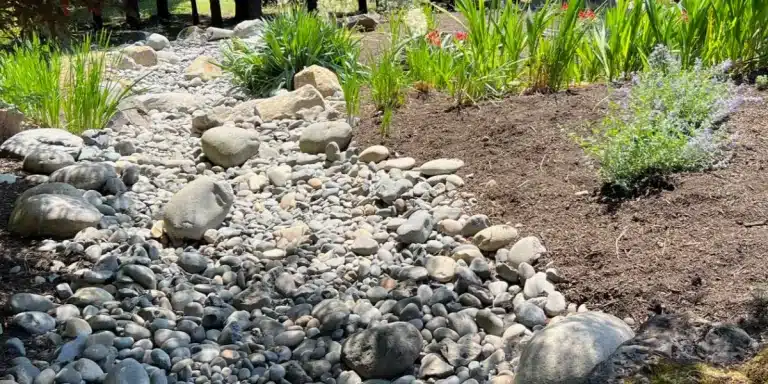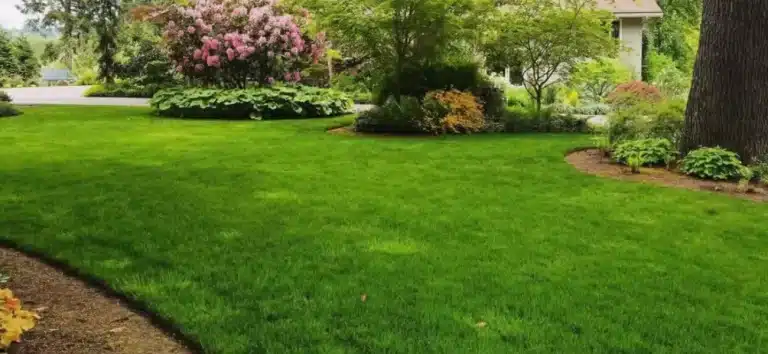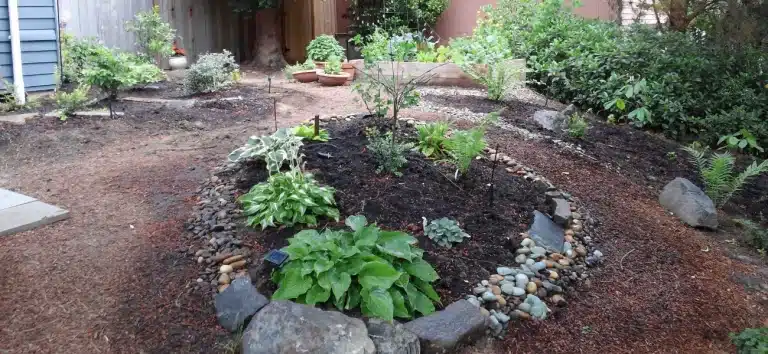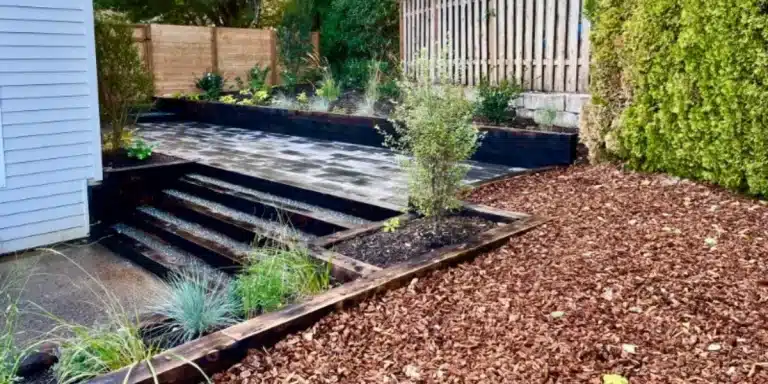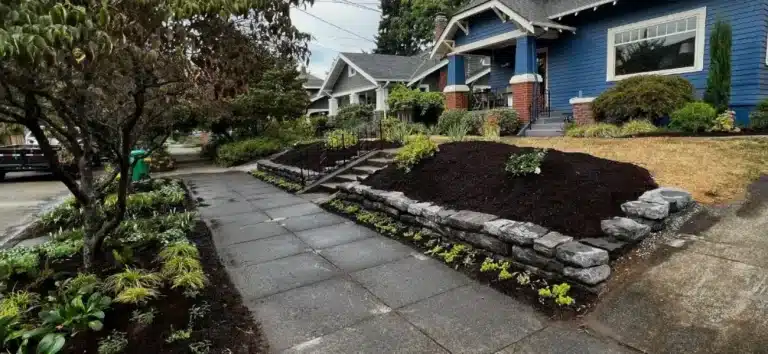What Is Xeriscaping? A Water-Saving Guide for Portland
In Portland and surrounding areas, many homeowners are looking for ways to reduce water use without sacrificing curb appeal. That’s where xeriscaping comes in. Originally popularized in arid regions, xeriscaping is gaining traction in the Pacific Northwest as a smart, sustainable approach to landscaping that’s beautiful, functional, and environmentally friendly.
If you’re looking to lower your water bill, simplify maintenance, or create a more climate-adapted yard, this guide will help you understand what xeriscaping is—and how White Oak Landscapes can help you make the most of it.
What Is Xeriscaping?
Xeriscaping is a landscaping approach designed to reduce or completely eliminate the need for supplemental irrigation. While often associated with dry, desert-like environments, xeriscaping is not limited to gravel yards and cacti. In fact, when applied correctly, it can produce a lush, vibrant, and low-maintenance landscape that works in a variety of climates—including here in the Portland area.
The word “xeriscape” comes from the Greek word xeros, meaning dry, and the concept was developed to help homeowners and municipalities create beautiful landscapes that conserve water, improve soil health, and reduce maintenance costs.
Contrary to popular belief, xeriscaping doesn’t mean sacrificing greenery or color. Instead, it emphasizes intentional design, plant selection, and water use to create sustainable outdoor spaces that thrive with less intervention. It’s especially valuable in Portland, where summer droughts are becoming more common, and homeowners are increasingly looking for environmentally responsible alternatives to traditional lawns.
The Core Principles of Xeriscaping
At White Oak Landscapes, we use xeriscaping principles to help our clients in Portland and surrounding areas create outdoor spaces that are both beautiful and practical. A successful xeriscape typically incorporates the following elements:
-
- Water efficiency
Every component of a xeriscape is designed to minimize water waste. This includes using drip irrigation, scheduling watering times for cooler parts of the day, and designing landscapes in zones based on plant water needs. - Native and drought-tolerant plants
Plants that are adapted to our regional climate require less water and are more resistant to local pests and diseases. In the Portland area, this includes species like Oregon grape, red-flowering currant, sedum, lavender, and ornamental grasses. - Healthy soil management
Good soil is the foundation of a successful xeriscape. We improve soil structure and water-holding capacity by incorporating organic matter and testing for pH and nutrient balance. - Strategic use of mulch and ground covers
Mulch is critical in xeriscaping. It helps retain soil moisture, suppress weeds, and regulate soil temperature. We use bark mulch, decorative gravel, and living ground covers based on the surrounding landscape and design goals. - Efficient, targeted irrigation
Unlike traditional spray systems that waste water through evaporation and runoff, xeriscaped landscapes rely on drip irrigation and soaker hoses to deliver water directly to the plant roots—where it’s needed most. - Minimal lawn areas
Lawns are water-intensive and high-maintenance. Xeriscaping often replaces them with lower-maintenance alternatives like clover, ornamental grasses, or native ground covers. If a lawn is desired, we use drought-resistant turf species in limited areas. - Sustainable maintenance practices
A well-designed xeriscape requires far less mowing, fertilizing, pruning, and watering—saving time, money, and resources in the long run.
- Water efficiency
This approach to landscaping is ideal for anyone looking to reduce their environmental impact without giving up a beautiful yard. Whether you're trying to cut down on water use, eliminate the need for constant lawn care, or simply want a landscape that better reflects the Pacific Northwest climate, xeriscaping is a practical, forward-thinking solution.
Why Xeriscaping Makes Sense in Portland
While Portland isn’t as dry as other regions, water conservation is still important—especially during our increasingly hot, dry summers. Xeriscaping is an ideal choice for homeowners who want a resilient, low-maintenance landscape that holds up year-round.
Benefits of xeriscaping in the Portland area include:
-
- Lower water bills – Reduces reliance on irrigation systems during dry months
- Reduced maintenance – Less mowing, fertilizing, and trimming
- Better plant survival – Native and climate-adapted plants handle summer droughts better
- Improved soil health – Less compaction and erosion from overwatering
- Increased property value – Well-designed xeriscapes are attractive, practical, and environmentally responsible
Key Elements of a Xeriscape
At White Oak Landscapes, we approach xeriscaping as a custom design solution—not a one-size-fits-all formula. Every property is different, so we take the time to understand your landscape, lifestyle, and long-term goals before developing a plan that combines function, beauty, and sustainability.
Here are the core components we typically include in a well-designed xeriscape:
1. Soil Preparation
Healthy soil is the foundation of any successful landscape—especially one that relies on minimal irrigation.
-
-
- We evaluate your soil’s texture, drainage capacity, and nutrient levels through professional soil testing
- Organic matter such as compost is added to improve water retention and encourage microbial life
- In compacted or clay-heavy Portland soils, we may loosen the subgrade and incorporate soil amendments to support long-term plant health
-
Why it matters: Well-prepared soil retains moisture longer, reduces runoff, and gives plants the nutrients they need with fewer chemical inputs.
2. Water-Efficient Design
Smart planning is key to maximizing water savings. We use zoning and plant grouping techniques to make the most of every drop.
-
-
- We organize plants by their water needs, placing high-water plants near shaded, visible areas (like entryways or patios)
- Low-water plants are positioned in open, sunnier spots
- Sloped or erosion-prone areas are reshaped or planted with deep-rooted, soil-holding species
- Shade from trees, pergolas, or shrubs is used strategically to reduce evaporation in exposed areas
-
Why it matters: A well-zoned design minimizes overwatering and ensures every plant gets exactly what it needs—no more, no less.
3. Native and Drought-Tolerant Plants
The right plants make all the difference. We focus on hardy, low-maintenance selections that naturally thrive in Portland’s climate.
Common plants we use include:
-
-
- Oregon grape (Mahonia aquifolium)
- Red-flowering currant (Ribes sanguineum)
- Sedum varieties (stonecrop)
- Lavender (Lavandula spp.)
- Yarrow (Achillea millefolium)
- Manzanita (Arctostaphylos spp.)
- Tufted hairgrass (Deschampsia cespitosa)
- Pacific ninebark (Physocarpus capitatus)
-
Why it matters: Native and climate-adapted plants reduce the need for watering, fertilizing, and pest control—saving you time, money, and stress.
4. Limited Lawn Areas
Turf grass is one of the most water- and maintenance-intensive features in traditional landscapes. Xeriscaping doesn’t mean you have to eliminate your lawn—but it does mean using it wisely.
-
-
- We often reduce lawn size to small, functional areas used for play, pets, or visual balance
- In place of traditional turf, we may install drought-tolerant alternatives like fescue blends, microclover, or native ground covers
- Ornamental grasses or low-growing perennials can create lush, green spaces with far less water
-
Why it matters: Reducing lawn area can cut your outdoor water usage by up to 50%, while also lowering your mowing, fertilizing, and maintenance costs.
5. Efficient Irrigation
Traditional spray irrigation systems waste a significant amount of water through evaporation and overspray. We upgrade or install systems that water smarter.
-
-
- Drip irrigation systems deliver water directly to plant roots with minimal loss
- Soaker hoses may be used in dense planting beds for even moisture distribution
- Smart irrigation controllers adjust watering schedules based on weather, soil moisture, and seasonal conditions
-
Why it matters: Targeted irrigation is key to water conservation—and it’s a service we specialize in, especially for Portland-area yards that experience both wet winters and dry summers.
6. Mulch and Ground Covers
The right ground cover protects your soil and helps regulate moisture year-round.
-
- We apply a thick layer of bark mulch or wood chips around plants to suppress weeds and insulate roots
- In high-traffic or highly visible areas, we may use decorative gravel, stone, or paver paths that blend beauty with function
- Living ground covers like creeping thyme or kinnikinnick can also be used to add greenery without demanding water
Why it matters: Mulch and ground covers reduce evaporation, prevent weed growth, and give your xeriscape a clean, finished appearance.
Common Xeriscaping Myths
Xeriscaping is often misunderstood, leading some homeowners to think it's not right for them. Let’s clear up a few common misconceptions:
-
- “It means no plants.” Not true. A well-designed xeriscape can include a wide variety of trees, shrubs, perennials, and grasses—many of which are blooming and colorful.
- “It’s just rocks and gravel.” While stone can play a role, we balance hardscape with carefully chosen plants, ground covers, and mulch to maintain a natural, inviting look.
- “It’s only for desert climates.” Xeriscaping is just as effective in Portland’s temperate climate. With hotter summers and more extreme weather patterns, it’s a smart choice for long-term landscape health and water efficiency.
Mini Case Study: A Water-Wise Yard in Lake Oswego
One of our clients in Lake Oswego wanted to reduce their water bill and eliminate the patchy lawn that struggled every summer. We designed a xeriscape that replaced the grass with native ornamental grasses, boulders, low-voltage lighting, and drought-tolerant flowering shrubs. The result? A vibrant, low-maintenance yard that stayed green through the entire dry season—with 60% less water use.
Proudly Serving Portland and Surrounding Areas
White Oak Landscapes provides professional xeriscaping and landscape design services throughout the Portland area, including:
-
- Portland
- Oregon City
- Lake Oswego
- West Linn
- Tualatin
- Milwaukie
- Damascus
- Nearby communities across Clackamas County
Ready to Build a Water-Wise Landscape?
Let’s transform your yard into a beautiful, low-maintenance, water-efficient space. At White Oak Landscapes, we create custom xeriscape designs that fit your lifestyle, budget, and the unique conditions of your property.
Call us today or request an estimate to get started. We proudly serve homeowners in Portland, Oregon City, Lake Oswego, Tualatin, West Linn, Milwaukie, Damascus, and surrounding areas with expert landscape design, planting, irrigation, and sustainable lawn alternatives.

